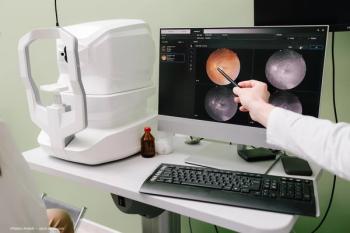
Study: Fovea-involving half dose of PDT proves a safe, long-term treatment option for chronic CSC
According to researchers, patients with chronic CSC treated with 1 fovea-involving, half-dose PTD application had a significant improvement in structure and function at the final follow-up and foveal atrophy did not develop in any patients.
A team of researchers found 1 application of fovea-involving half-dose photodynamic therapy (PDT) was beneficial structurally and functionally for treating patients with chronic central serous chorioretinopathy (CSC) and they did not develop foveal atrophy.
Helena Feenstra, MD, who is from the Department of Ophthalmology, Leiden University Medical Center, Leiden, the Netherlands, led a research team that undertook a retrospective analysis of data from patients with chronic CSC to determine the effect of this treatment strategy who had been in the prospective, randomized PLACE and SPECTRA trials.1
A total of 57 patients with chronic CSC received a single half-dose PTD with a treatment spot that included the fovea. Optical coherence tomography scans and fundus autofluorescence images were analyzed for structural improvement and possible atrophic development at baseline and at several visits after treatment.
According to researchers, the main outcome measures were the integrity of the external limiting membrane and ellipsoid zone on optical coherence tomography and hypoautofluorescence on fundus autofluorescence, she explained.
Imaging showed that the subfoveal external limiting membrane was continuous in 21 (36.8%) of 57 patients at baseline, and the subfoveal ellipsoid zone was continuous in 5 (8.8%) of 57 patients at the first visit; these improved, respectively, to 50 (98.0%) of 51 and 32 (62.7%) of 51 at the final visit at 2 years (p < 0.001 for both comparisons).
Fundus autofluorescence showed that 25 (45.5%) of 55 patients had baseline hypoautofluorescent changes and 23 (45.1%) of 51 patients had them at the final visit (p = 0.480).
The authors concluded that the patients with chronic CSC treated with 1 fovea-involving, half-dose PTD application had a significant improvement in structure and function at the final follow-up and foveal atrophy did not develop in any patients.
“This adds to the evidence that half-dose PTD is a safe long-term treatment for patients with chronic CSC,” researchers said.
Reference:
Feenstra HMA, Diederen RMH, Lamme MJCM, et al. Increasing evidence for the safety of fovea-involving half-dose photodynamic therapy for chronic central serous chorioretinopathy. Retina 2023;43:379-88; doi: 10.1097/IAE.0000000000003686
Newsletter
Don’t miss out—get Ophthalmology Times updates on the latest clinical advancements and expert interviews, straight to your inbox.













































